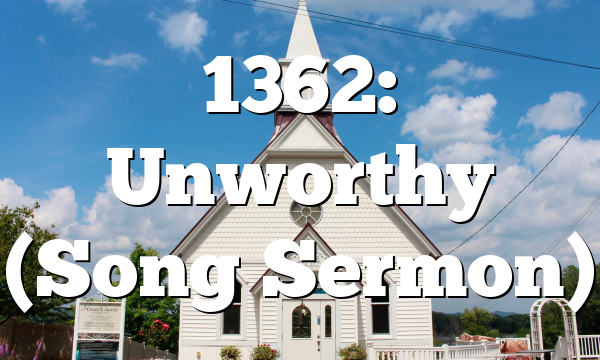Click to join the conversation with over 500,000 Pentecostal believers and scholars
Click to get our FREE MOBILE APP and stay connected
| PentecostalTheology.com



There is a right and wrong way to react when leaders fail! The church needs to learn this lesson!
#perrystone #prophecy #mannafest
Perry Stone or anyone from our ministry will never comment on YouTube asking for money. If you see someone do this, it is a SCAM, and please report to YouTube directly. Thank you!
PSM Website: https://perrystone.org/
PSTV: https://perrystone.tv/
Facebook: https://www.facebook.com/perrystonevoe/
Twitter: https://twitter.com/perrystonevoe



Anonymous
https://www.pbs.org/newshour/politics/trump-says-he-will-surrender-thursday-on-georgia-charges-tied-to-efforts-to-overturn-the-2020-election
Anonymous
Kyle Williams do you care to respond to the Internal Evidence from within the document itself. In addition to the external evidence from the church fathers, the book of Revelation has many internal indications that support the late date.[73]
ARGUMENT #1: The late date explains why John, Paul, and Timothy never mention one another together in Ephesus.
If the early date is true, then John would have been leading in Ephesus at the same time as Paul and Timothy. Why would Paul leave Timothy in charge of the Ephesian church if the apostle John was there? Moreover, at the end of 2 Timothy, Paul mentions 17 coworkers by name, but he never mentions John. We are not merely making an argument from silence. This is a conspicuous silence. Why wouldn’t Paul mention such a spiritual titan like John? Likewise, why wouldn’t Jesus mention Paul or Timothy when writing to the church of Ephesus? (Rev. 2:1-7) Witherington writes, “The lack of apostolic presence and, by contrast, the presence of powerful prophets (both John and those he calls false prophets) seem to reflect a time after the apostles had died off late in the first century A.D. (cf. the Didache).”[74]
ARGUMENT #2: The late date explains why Paul and Jesus give conflicting reports about false teachers in Ephesus.
Paul’s letters to Ephesus and Jesus’ letter to Ephesus give conflicting reports regarding false teachers. On the one hand, Paul writes about men who “teach strange doctrines” (1 Tim. 1:3) and the “doctrines of demons” (1 Tim. 4:1). Paul even mentions several false teachers by name: Hymenaeus, Alexander, and Philetus (1 Tim. 1:20; 2 Tim. 2:17). Yet, Jesus’ letter to Ephesus tells a different story. Instead of being riddled with false teachers, Jesus says, “You cannot tolerate evil men, and you put to the test those who call themselves apostles, and they are not, and you found them to be false… You hate the deeds of the Nicolaitans, which I also hate” (Rev. 2:2, 6). This is quite unlike the church of Pergamum who “have some who… hold the teaching of the Nicolaitans” (Rev. 2:15).
ARGUMENT #3: The late date explains how the church in Smyrna had time to grow before receiving a letter from Jesus.
Polycarp wrote a letter to the Philippians in AD 110. In it, he states that the Smyrnaeans weren’t believers when Paul wrote his letter to the Philippians in AD 60-61.
[You Philippians] are praised in the beginning of his Epistle. For concerning you he boasts in all the Churches who then alone had known the Lord, for we had not yet known him.[75]
Polycarp was the bishop of Smyrna. So, his use of the plural “we” refers to “the church at Smyrna,” which would “indicate that that church was not in existence at the time in question.”[76] Put simply, Polycarp is claiming that “when Paul wrote Philippians no Smyrneans had yet been evangelized.”[77]
Craig Blomberg[78] and Gordon Fee[79] date Philippians to AD 61. Therefore, Polycarp maintains that the church in Smyrna didn’t exist before this time. This, of course, carried difficulties for the early date advocate. It requires a church entering Smyrna and springing up all within a 4-5 year span. Acts 19:10 says that “All who lived in Asia heard the word of the Lord,” but this is hyperbolic language. This doesn’t mean that a church specifically existed in the city of Smyrna. Moreover, Paul never mentions a church existing in Smyrna in any of his letters.
ARGUMENT #4: The late date explains how the church in Laodicea had time to plummet spiritually by AD 65.
D.A. Carson, Douglas Moo,[80] and P.T. O’Brien[81] date Colossians to AD 60-61. Paul mentions a thriving church in Laodicea at this time (Col. 2:2; 4:13, 16). However, if Revelation was written in AD 65, then this church must have plummeted spiritually in just a few years. In fact, they had become so bad, that Christ threatened to vomit them out of his mouth! (Rev. 3:16) Of course, spiritual decline can occur quickly (Gal. 1:6), but which is more likely? A quick decline or a slower decline?
ARGUMENT #5: The late date explains Jesus’ words to the church in Laodicea in light of the great earthquake of AD 60.
The entire region around Laodicea suffered a massive earthquake in AD 60. In fact, the region suffered until at least AD 80,[82] and the “archaeological evidence at Laodicea points to a thirty-year rebuilding process.”[83]
And yet, Jesus told the Laodiceans that they are “wealthy” and “have need of nothing” (Rev. 3:16). If the early date is true, it would be quite cruel to tell a destroyed city that they are “wealthy” and “have need of nothing.” However, if the late date is true, this would make perfect sense. Tacitus mentions that the Laodiceans refused all aid from the Roman Empire after the earthquake.[84] They rebuilt their city all on their own, because they were “wealthy” and had “need of nothing.” Hemer writes, “There is good reason for seeing Rev. 3.17 against the background of the boasted afluence [sic] of Laodicea, notoriously exemplified in her refusal of Roman aid and her carrying through a great programme of reconstruction in a spirit of proud independence and ostentatious individual benefaction.”[85]